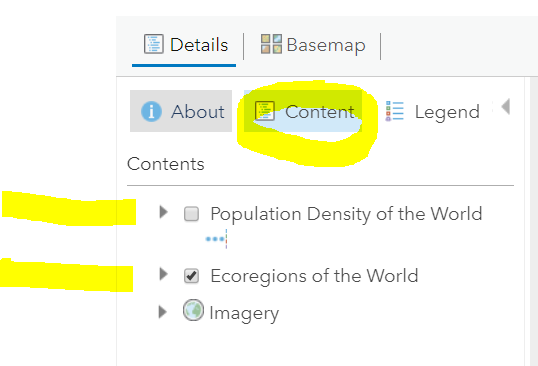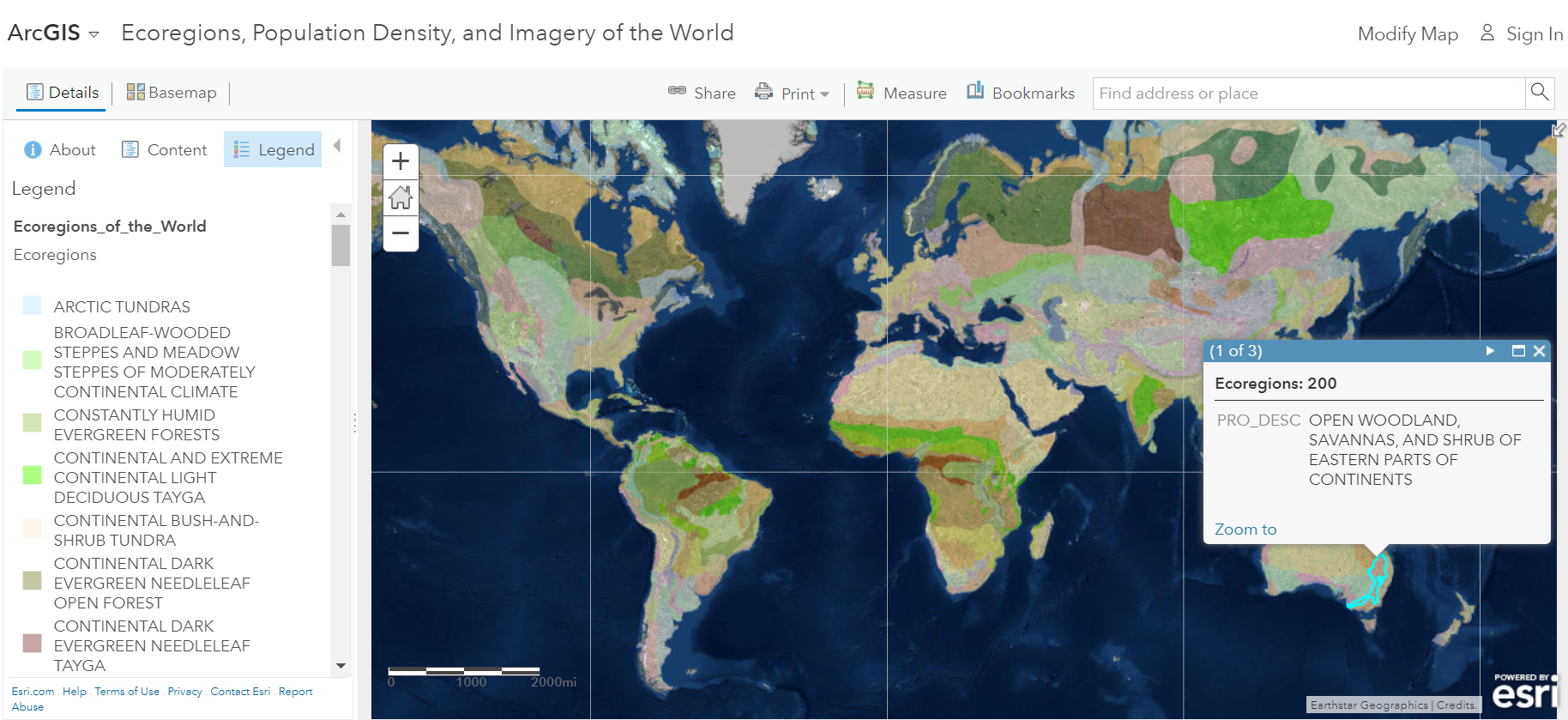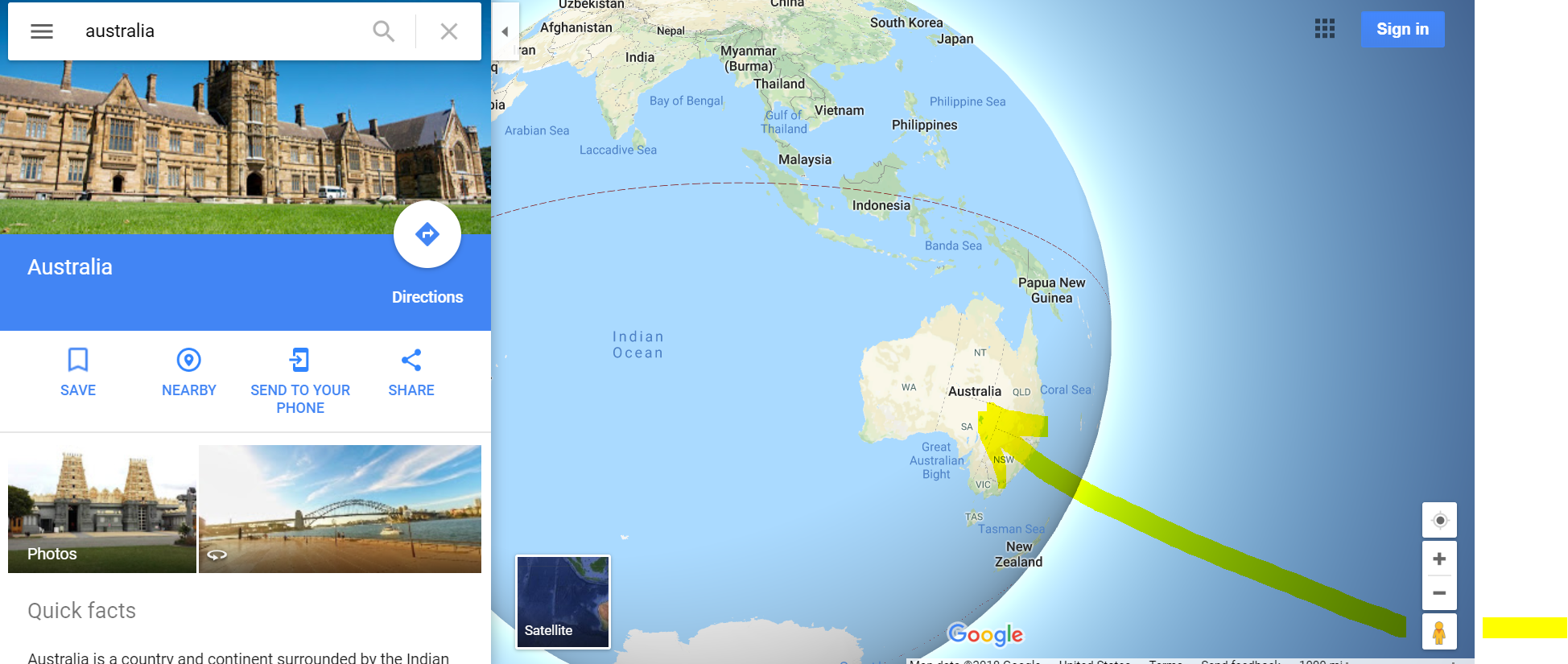- Home
- :
- All Communities
- :
- Industries
- :
- Education
- :
- Education Blog
- :
- Investigating World Ecoregions and Population Dens...
Investigating World Ecoregions and Population Density
- Subscribe to RSS Feed
- Mark as New
- Mark as Read
- Bookmark
- Subscribe
- Printer Friendly Page
Examining Regions with ArcGIS Maps and Google Street View. At times, geographic learning is enhanced with photographs taken on the landscape you are studying. Fortunately, photographs are a standard part of today’s Spatial Technology. In the following activity, you will study regions through an interactive map and on-the-ground photographs.
Examine a world ecoregions and population density map. Access the map of World Ecoregions and Population Density, in ArcGIS , here:
http://www.arcgis.com/home/webmap/viewer.html?webmap=07820fa6b81e4b2b996c394bf76d63ea
To the left of the map > Content > Turn off population density and turn on ecoregions, as follows:

On the map, click on one of the ecoregions. You might have to use the > next button in the popup until you get “past” the continent and country information to the ecoregion name. The map will look similar to this:

Compare the ecoregions in eastern Australia and central Australia. Or another region of the world.
Based on the descriptions, what do you predict the landscape will look like on the ground in those locations? What landforms, trees, and shrubs will predominate? Will you see any evidence of water? What will the evidence of humans be on land use?
Toggle the population density layer on and off, noting the patterns that you see in helping you answer the following question when you go to Street View for a chosen area: Will you see any towns or cities?
Examine on-the-ground photographs from Street View.
To test your hypotheses about the characteristics of the ecoregions, go to Google Maps: https://www.google.com/maps Search on Australia. You will likely see a 3D scene zoomed to the scale of all of Australia, as below, particularly if you have enabled the Google Earth plugin to your web browser. Drag the Street View icon and hover it over the continent of Australia. Before dropping it on the map, note the amount of blue on the map. This reflects how many roads exist, and also the extent that the Google cars have traveled with their 360 degree cameras (which in turn reflects some socio-political geography as well; that is, where the cars are allowed in specific places around the world and where they are prohibited—another good topic for geography class discussions!).

Now, drop the Street View icon on a region in Australia corresponding to one of the ecoregions you investigated earlier. What do you predict you will see? For example, compare the location in Queensland, at left, to the location in Northern Territory, at right:
What do you predict the land will look like in a taiga ecoregion? A chaparral ecoregion? Compare your predictions against a street view image.
Extending the activity: Use GeoGuessr quizzes about the Earth. Another method of helping students to think spatially about cultural and physical regions using street view images is with GeoGuessr (without the “e” in the last part of the word): https://geoguessr.com/ In this quiz, a player (or competing against another player, say, another student in your classroom), guesses the location on the map, and the points depend on the speed at which the student responds and the distance “off” from the true location of that image. Excellent connections to fostering spatial thinking in geography include considerations of the landforms, climate as reflected in water or vegetation types, driving on the left or right side of the road, languages visible, land use, housing type and construction material, and other objects on the physical and cultural landscape.
You must be a registered user to add a comment. If you've already registered, sign in. Otherwise, register and sign in.
-
Administration
80 -
Announcements
80 -
Career & Tech Ed
1 -
Curriculum-Learning Resources
259 -
Education Facilities
24 -
Events
72 -
GeoInquiries
1 -
Higher Education
598 -
Informal Education
281 -
Licensing Best Practices
93 -
National Geographic MapMaker
33 -
Pedagogy and Education Theory
226 -
Schools (K - 12)
282 -
Schools (K-12)
273 -
Spatial data
35 -
STEM
3 -
Students - Higher Education
246 -
Students - K-12 Schools
129 -
Success Stories
36 -
TeacherDesk
1 -
Tech Tips
121
- « Previous
- Next »